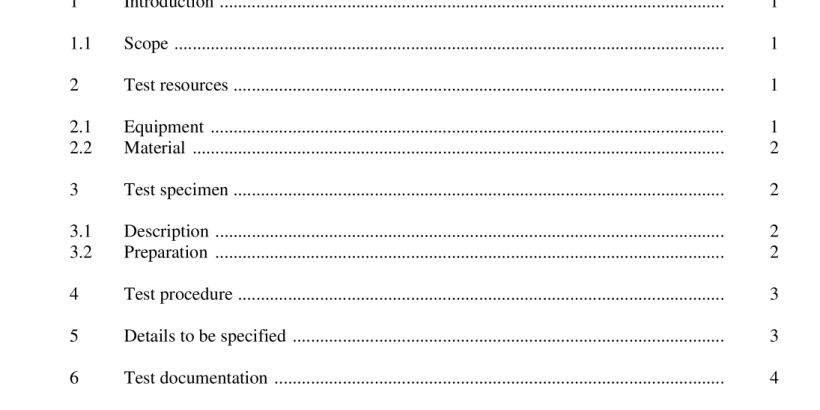ANSI ECA 364-91B-2016 pdf download.Dust Test Procedure for Electrical Connectors and Sockets
1.1 Scope
1.1.1 This standard establishes a test method to determine the susceptibility of an electrical connector or socket system to the potential degradation mechanism of a dust/fiber environment common to an office or manufacturing area.
1.1.2 This method may be used as a preconditioning test whereby the test specimen is exposed to a heavy concentration of dust and then exposed to a subsequent environment or as a “stand alone” test.
1.1.3 This test should not be considered as an alternate or replacement for the EIA-364-50 (Sand and Dust Test Procedure for Electrical Connectors and Sockets) that simulates an outdoor desert type environment.
CAUTION – This procedure may involve hazardous materials, operations and equipment. This procedure does not purport to address all safety problems associated with its use or all regulatory requirements. It is the responsibility of the user of this procedure to establish appropriate safety and health practices and to determine the applicability of regulatory limitations before its use.
2 Test resources
2.1 Equipment
2.1.1 A dust chamber of sufficient size to allow the test specimens to be placed in the chamber with the clearances as indicated in 4.1.
2.1.2 An air blower system of sufficient size to maintain a flow rate of 300 meters/minute (1000 feet/minute) ± 20%, unless otherwise specified in the referencing document.
2.1.3 A dust dispensing system capable of holding the volume of dust required.
2.1.4 A timing circuit may be required for those situations where dust is to be applied in a time cycle mode.
2.1.5 Unless otherwise specified, the air blower/dust dispensing system shall be capable of blowing the dust in a vertically upward direction from the bottom of the chamber to the top of the chamber.
2.1.6 The chamber attitude shall be such that when the blower is in an off condition, the dust shall fall by gravity to the bottom of the chamber into a collection area.
2.2 Material
2.2.1 Dust composition
Unless otherwise specified in the referencing document, the specified dust composition shall be one of those listed in table A.1 or A.2. The dust composition shall not be reused in any subsequent test.
3.1 Description
The referencing document shall specify if the test specimens are to be exposed mated or unmated. If unmated, it shall be specified if the receptacle, mating device or both is to be exposed. If not specified, only the connector normally exposed to the environment shall be tested unmated.
3.2 Preparation
The test specimens shall be placed in the chamber in such a manner as not to be closer than 76 millimeters (3.0 inch) from the walls of the test chamber and not closer than 76 millimeters (3.0 inches) from the dust entry area.
3.2.1 The specimens shall be held in place using non-reactive materials in a manner allowing unobstructed air flow around said specimens.
3.2.2 If multiple specimens are to be exposed simultaneously, the specimens shall be placed so as not to be closer than 50 millimeters (2.0 inches) from each other. Multiple specimens shall be spaced side by side in a manner that does not prevent dust accumulation on or in the specimens.
3.2.3 The test specimens shall be exposed in their normal terminated state.
3.2.4 The test specimens shall be placed in the chamber in the orientation representing their application and shall be specified in the referencing document.
3.2.5 Prior to exposure, the dust composition to be used shall be placed in a tray or holding container and evenly spread. The dust shall then be placed in an oven and dried at 50 °C ± 3 °C for 1.0 hour minimum.ANSI ECA 364-91B-2016 pdf download
